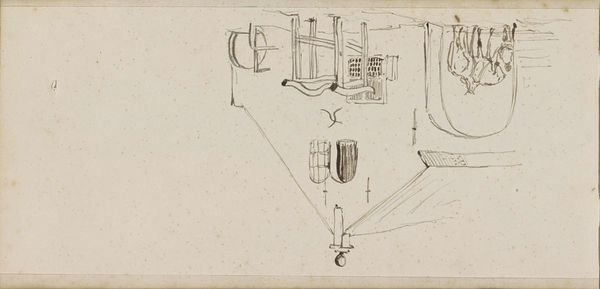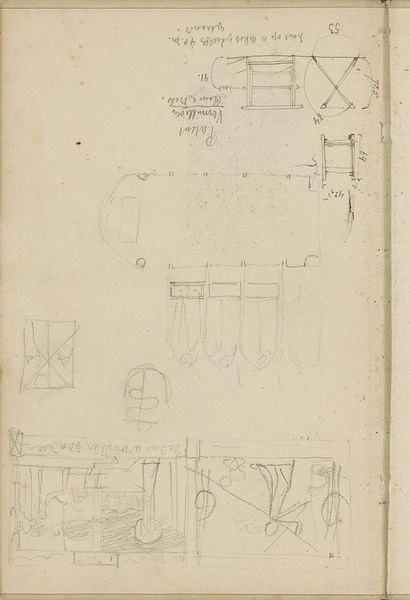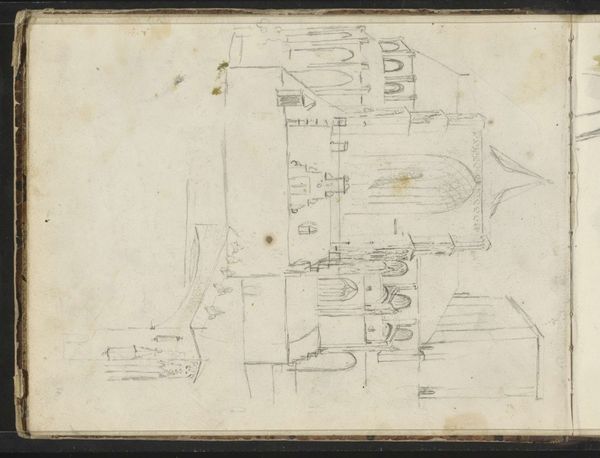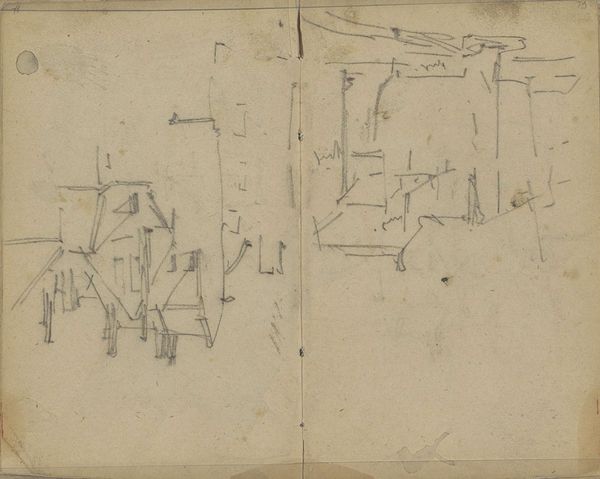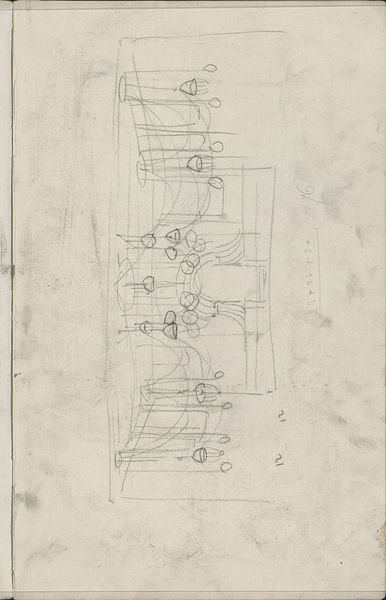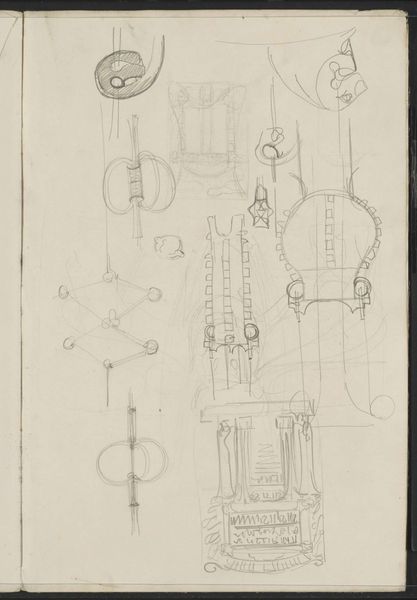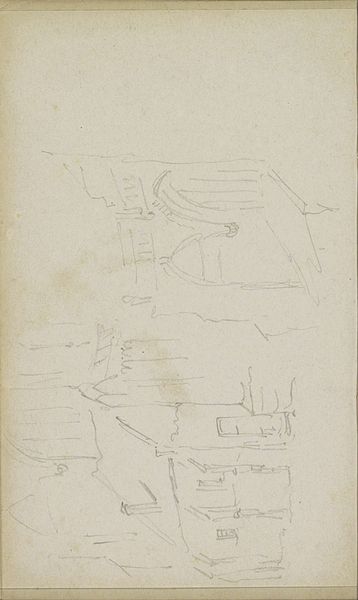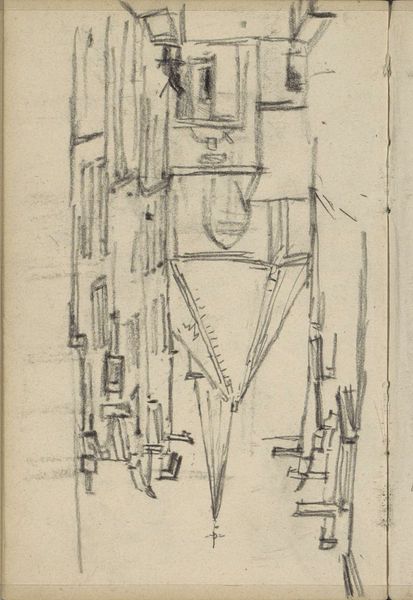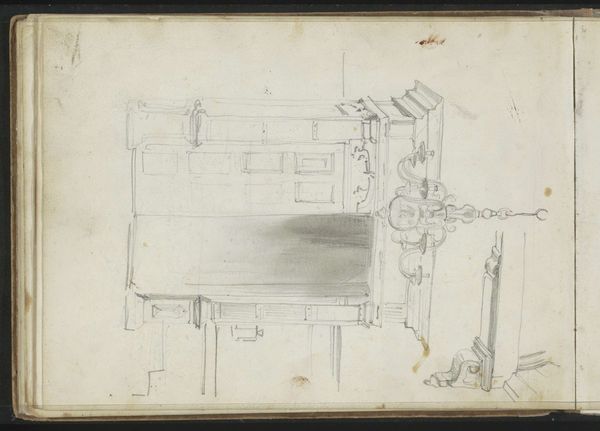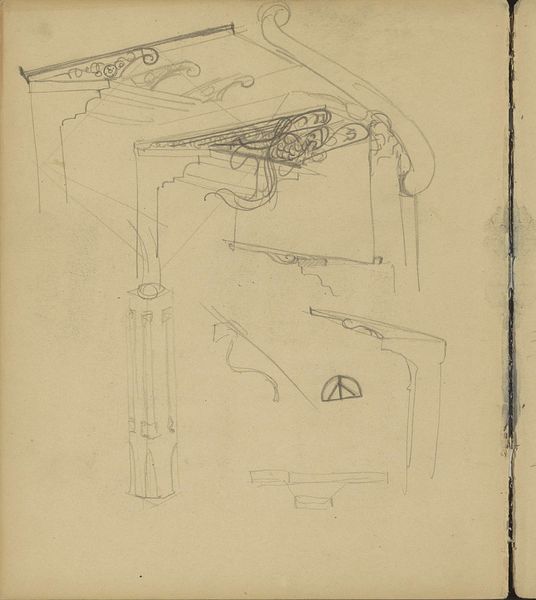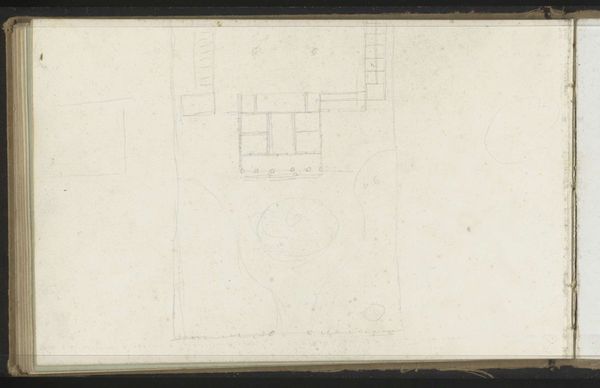
drawing, pencil, architecture
#
drawing
#
geometric
#
pencil
#
architecture
Copyright: Rijks Museum: Open Domain
Editor: So, here we have Carel Adolph Lion Cachet's "Architectuurstudies," made around 1890. It’s a pencil drawing on paper, and it’s intriguing how skeletal and ephemeral the structures feel. What do you see in this piece beyond architectural studies? Curator: I see a mind grappling with legacy. Notice the recurring geometric shapes. Consider how these forms, at their inception, might symbolize order, permanence, even dominion. But Cachet's wispy pencil lines seem to suggest the fleeting nature of these grand ambitions, almost like palimpsests— where past architectural dreams remain faintly etched, while other visions struggle to materialize. Does the artist celebrate or question the stability of inherited forms? Editor: That’s a good question. I was so focused on the incomplete aspects that I hadn’t considered the weight of "legacy" in the drawing. What does that incomplete feeling mean to you? Curator: Perhaps the incompleteness speaks to the psychology of creation. Architecture is never truly finished. It constantly evolves as inhabitants, whether individuals or entire cultures, occupy and interact with the physical structure and invest their own dreams and ideas in the building. The drawing's linear quality reminds me of sketches on ancient walls—the yearning for something just beyond grasp, yet forever embedded in cultural memory. Editor: So the drawing style itself, beyond just depicting architectural forms, embodies that evolution and interpretation across generations? Curator: Precisely. Each mark seems to whisper echoes of former grandeur and perhaps present-day uncertainties. What feels to you, initially, to be "incomplete" allows space for new narrative. It becomes symbolic of an invitation for future contributions, and an affirmation of continuity across time. Editor: That’s given me a lot to think about. I originally saw the piece as a simple study, but understanding how the drawing represents the continuous interpretation of established form adds so much meaning. Curator: Indeed. Now it’s part of your cultural memory.
Comments
No comments
Be the first to comment and join the conversation on the ultimate creative platform.
